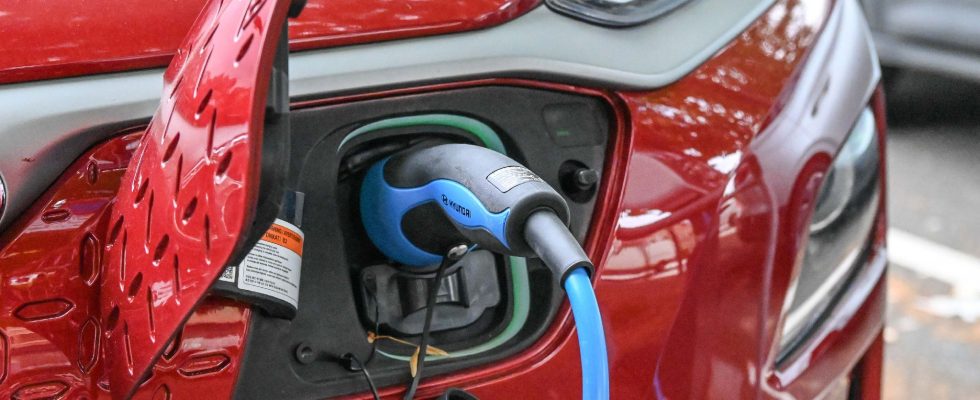A new calculation of the ecological bonus which will make it possible to “valorize the most virtuous industrial production”, promises Bruno Le Maire, the Minister of the Economy. New criteria will therefore be taken into account, such as transport, battery, materials used or assembly, to qualify for assistance with the purchase of an electric vehicle. “We give an advantage to French and European companies which make the effort to reduce their environmental footprint,” said Agnès Pannier-Runacher, Minister of Energy Transition. The list of electric cars eligible from January 1, 2024 for this new bonus will be revealed on December 15.
This aid is currently 5,000 euros and 7,000 for households whose reference tax income is less than or equal to 14,089 euros. It only concerns electric vehicles under 47,000 euros. Now, cars will need to have a minimum environmental rating of 60 out of 100. Among the models that will no longer benefit from this, Agnès Pannier-Runacher already announced last week on TF1 the Chinese MG and the electric Dacia Spring (Renault group).
“For us, this is a measure that goes in the right direction,” says Marie Chéron, head of vehicle policies for Transport & Environment France, to L’Express. “Today, the bonus is based on emissions during use regardless of the carbon footprint of vehicle production. It is therefore a strong signal for users and industries.” A measure which would also save the State money. The ecological bonus currently costs 1 billion euros per year and almost a third of the electric vehicles sold which are currently subsidized have a poor environmental score and will soon no longer be eligible according to The gallery.
Eligible models more expensive than others
However, concerns are emerging. Most European manufacturers have batteries from China. How will this affect their scores? “The battery represents 30% of the carbon footprint of a vehicle, if you are excellent on all other points, then you will enter into the bonus”, reports the government to The gallery. Due to the manufacturing costs of French or European batteries, the models could also be more expensive. The government is therefore considering increasing the ecological bonus to make up the difference.
Ultimately, the measure could evolve and become more demanding. Marie Chéron, from the European federation of T&E NGOs, hopes for example to see the environmental score intervene on “taxation applied to the fleets of companies which represent half of the automobile market”. She would also like “more transparency on certain elements of calculations” and “particular attention paid to consistency with European regulations”, particularly on batteries.
First protectionist measure by a European country
The question of thresholds is also crucial: that of the pollution permitted during the design but also that of the weight of the vehicle allowing it to benefit from the aid. “To be eligible for the bonus, the vehicle must have a mass of 2.4 tonnes, notes Marie Chéron. We think that this threshold should be lowered to favor small, less polluting vehicles.” The European T&E organization also calls for better progression of the bonus. “As it stands, the calculation method amounts to creating a threshold for the vehicle’s production footprint at 14.75 tonnes of CO2 equivalent, which is already a lot,” regrets Marie Chéron. “It’s a shame that the bonus is the same for a car which generates 7 tonnes of CO2 equivalent and for another which has a footprint of more than 14 tonnes.”
The new conditions for obtaining the bonus mark a first response from a European country to Chinese measures. Last week, the European Union opened an investigation into Chinese subsidies to its own electric car industry. The government also says it is confident about the legal solidity of its project with regard to the rules of the World Trade Organization (WTO). The latter require them not to discriminate between their commercial partners. But they also allow exceptions in the name of environmental protection. “It is first of all a protectionist tool,” summarizes Marie Chéron. “It will also have to prove itself on an environmental level.”
